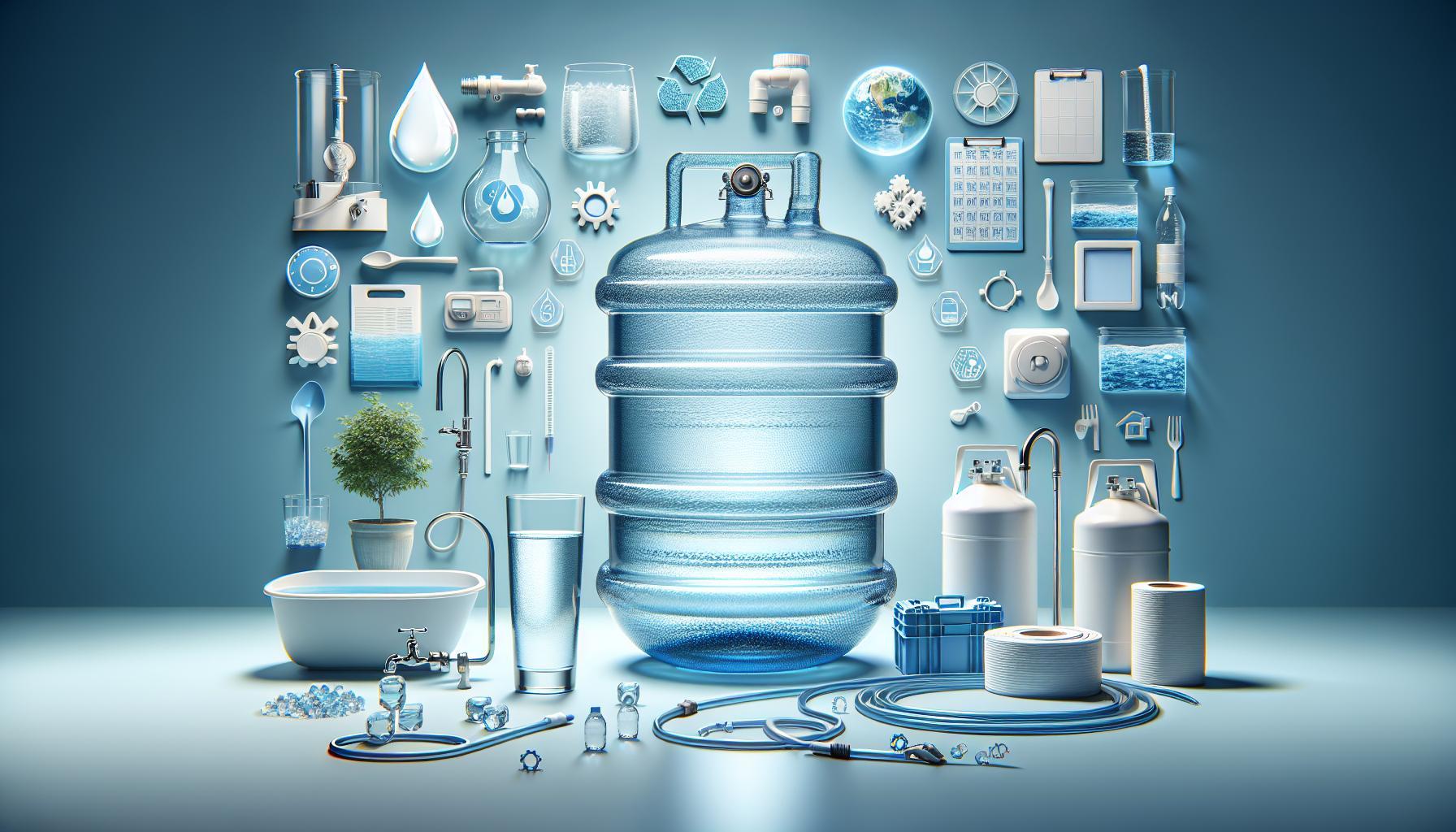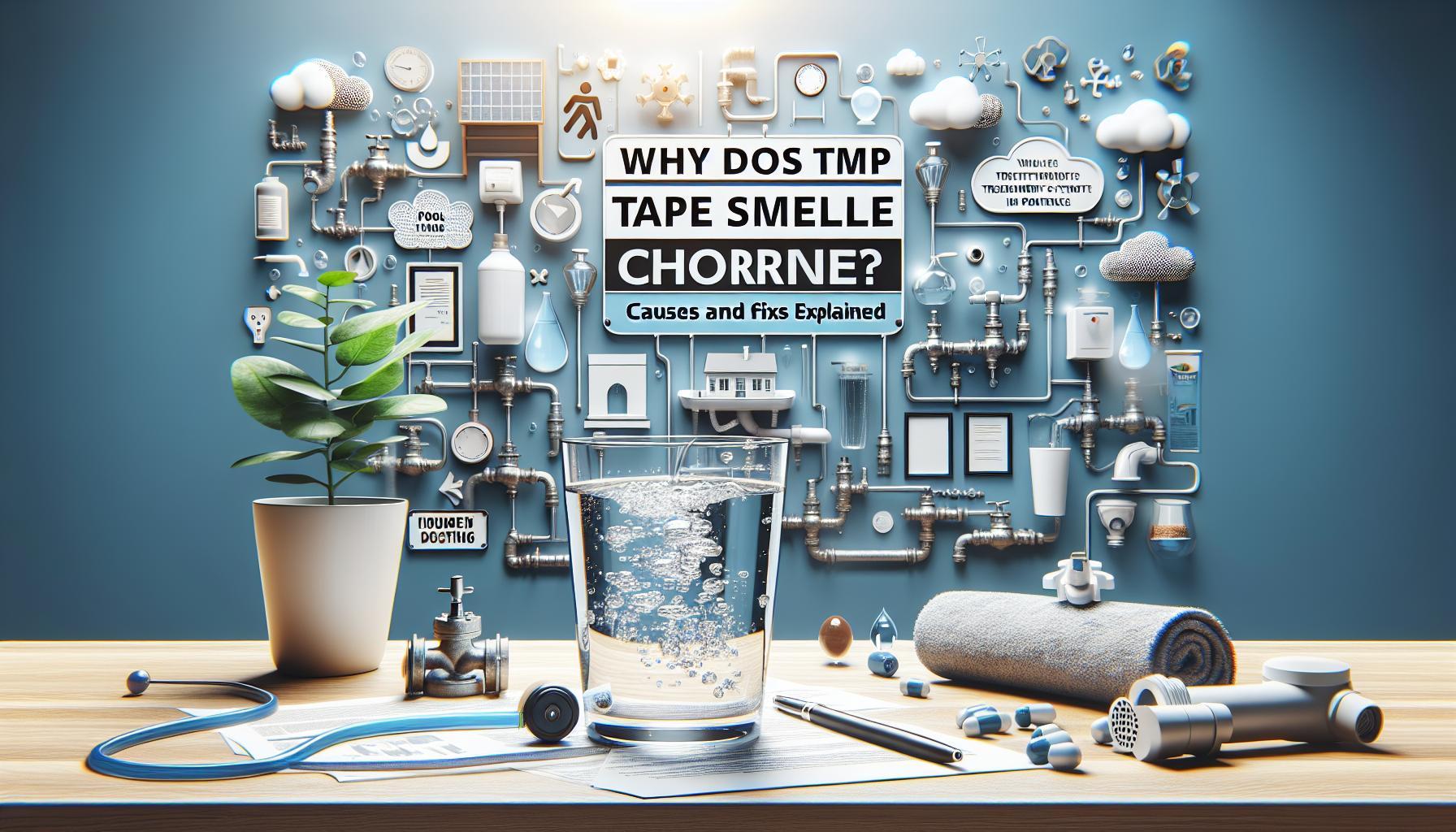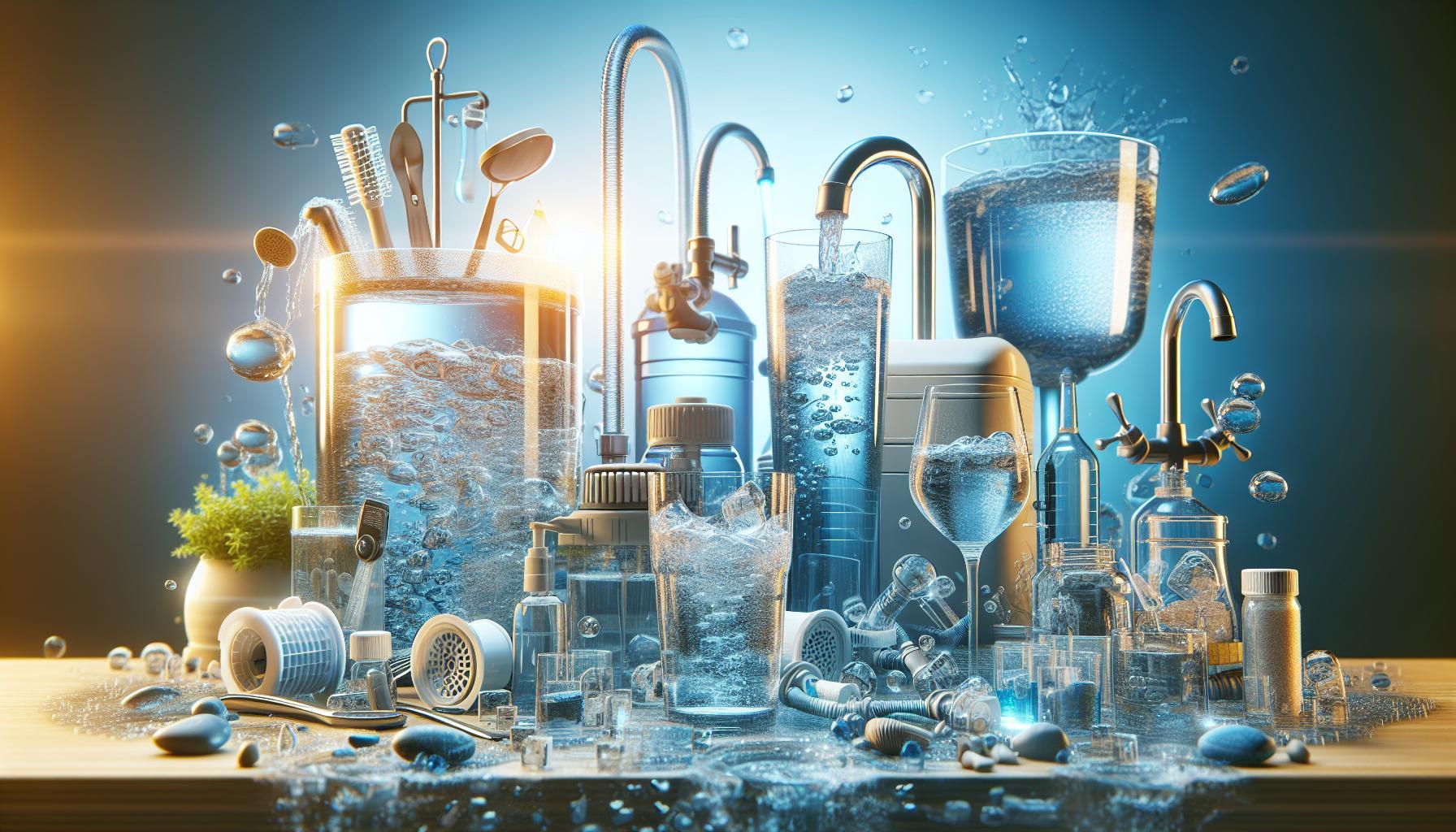Is your well water leaving a bitter or unappealing taste? Many homeowners face this challenge, but improving the flavor of well water is easier than you think. With the right tips and techniques, you can enjoy fresh, great-tasting water right from your tap, enhancing both your hydration experience and overall health.
Understanding the Unique Flavor of Well Water: What Influences Its Taste?
Well water, often regarded as a direct link to nature, can possess a fascinating array of flavors that are influenced by various factors. Unlike municipal water that is treated and processed, well water is drawn from underground aquifers, which makes its taste significantly unique and variable. Understanding what impacts this flavor profile can help you appreciate your well water and even enhance its taste, turning it from something potentially off-putting into a refreshing staple of your hydration routine.
Key Factors Influencing the Taste of Well Water
The taste of well water is shaped by several environmental and geological elements. Here are the primary influences:
- Mineral Content: The presence of minerals like calcium, magnesium, iron, and sulfur can significantly alter water’s flavor. For instance, high levels of iron may give water a metallic taste, while sulfur can create a distinct smell reminiscent of rotten eggs.
- pH Levels: Water’s acidity or alkalinity can change its taste perception. Acidic water (low pH) often tastes sour, while alkaline water (high pH) tends to have a smoother, more mellow flavor.
- Microbial Activity: Bacteria and microorganisms present in well water can produce byproducts that might contribute off-flavors. Certain bacteria can generate a sweet or earthy taste that can be undesirable.
- Geological Composition: The type of soil, rock, and minerals in the aquifer directly impacts the water’s chemical balance. Limestone deposits, for example, might yield water with a softer taste, whereas granite regions might lead to more metallic or bitter flavors.
How Environmental Changes Affect Taste
Seasonal variations and environmental factors also play a crucial role in how well water tastes. After heavy rainfall, groundwater can become diluted, changing its predominant mineral flavor. Conversely, during dry spells, the concentration of minerals may increase, intensifying certain flavors.
Practical Examples to Enhance Your Water Experience
Understanding these factors can pave the way for actionable steps on how to enhance your well water’s taste:
| Issue | Solution |
|---|---|
| Metallic Taste | Consider using a water filter designed to reduce heavy metals. |
| Sulfur Smell | Installing an oxidizing filter can help eliminate the sulfurous odor. |
| Earthy Flavor | Regularly testing and treating your well for microbial growth may mitigate issues. |
By actively testing and treating your well water based on its unique flavor profile, you can effectively enhance your drinking experience. Ultimately, appreciating the intrinsic qualities of your water—and knowing how to make well water taste better with expert tips—can foster a deeper connection to this vital resource.
Common Well Water Issues and Their Impact on Flavor
Many homeowners who rely on well water for their daily needs often find themselves grappling with unexpected tastes and odors that can negatively impact the enjoyment of beverages and cooking. Well water, while usually rich in minerals and potentially healthier than municipal options, can carry distinct flavors that range from metallic to earthy, or even sulfuric. Understanding the factors that translate to these off-putting tastes is essential for anyone looking to improve their well water experience.
Common Sources of Flavor Issues
The taste of well water can be influenced by several common issues:
- Iron and Manganese: Elevated levels of iron and manganese can lead to a metallic taste and staining of fixtures. This is particularly common in wells located near iron-rich geological formations.
- Sulfur Compounds: A rotten egg smell indicates hydrogen sulfide gas, which not only impacts flavor but may also point to bacterial activity in the water.
- Hardness: High concentrations of calcium and magnesium can cause hardness, leading to a chalky or bitter taste, often making drinks less enjoyable.
- Contaminants: Agricultural runoff or the presence of organic materials can introduce unwanted flavors, impacting both the safety and taste of your water.
Impact on Daily Life
These flavor issues not only affect the taste but also the quality of life for individuals who rely on well water. For instance, those who brew coffee or tea with unpleasant-tasting water may find their daily ritual less satisfying. Cooking can also be compromised; you might taste the off-flavors in soups, sauces, or even baked goods, causing frustration during meal preparation. In addition, friends and family might be hesitant to drink water from the tap, leading to unnecessary bottled water purchases.
To diagnose and address these issues effectively, homeowners should consider regular water testing. Identifying specific contaminants or flavor contributors allows for tailored solutions. For instance, installing a filtration system specifically designed to remove heavy metals can dramatically enhance the flavor profile of your water while ensuring its safety for consumption.
Practical Solutions for Improvement
Once the source of the unpleasant flavors has been identified, homeowners can take several practical steps to improve water taste:
| Issue | Solutions |
|---|---|
| Metallic Taste | Use a water softener or iron filter to remove excess minerals. |
| Rotten Egg Smell | Install a filtration system that targets hydrogen sulfide or use aeration techniques. |
| Hard Water | Implement a reverse osmosis system or a water conditioner to reduce hardness. |
| Contaminants | Regular water testing and a multi-stage home filtration system to remove pollutants. |
By proactively addressing these common well water issues, you can enhance not only the taste of your water but also the overall enjoyment of every sip and meal.
Effective Filtration Systems: Choosing the Right One for Your Needs
Choosing the right filtration system can significantly enhance the quality and taste of well water, turning it from a questionable resource into a refreshing and safe drinking option. With various contaminants that may be present in well water—such as sediments, iron, sulfur, and even bacteria—it’s crucial to select a system that effectively targets these issues. The proper filtration solution not only improves taste but also removes harmful impurities, ensuring your water is clean and safe for use.
To make an informed decision, start by identifying the specific contaminants in your well water. Testing your water for various parameters, such as pH, total dissolved solids (TDS), and the presence of specific contaminants, can guide you toward the right filtration solution. For example, if your water has high levels of iron, a specialized iron filter may be necessary. If it exhibits taste or odor issues related to sulfur, an activated carbon filter or an aeration system could be beneficial.
When exploring filtration options, here are some popular systems to consider:
- Activated Carbon Filters: These systems are effective for removing chlorine, volatile organic compounds (VOCs), and unpleasant tastes and odors.
- Reverse Osmosis (RO) Systems: Ideal for comprehensive purification, RO systems remove a wide range of contaminants, including bacteria, pesticides, and heavy metals.
- Whole House Filtration Systems: These systems ensure that every tap in your home provides filtered water, protecting your family from contaminants in cooking, bathing, and drinking.
- UV Purification: For homes concerned about bacteria and viruses, UV light systems offer a chemical-free method of disinfection.
Selecting the appropriate filtration system is just the first step. Regular maintenance ensures continued effectiveness. Schedule routine inspections and replace filters as recommended by the manufacturer. Keep track of when you last changed the filters to maintain optimal performance and to enjoy consistently better-tasting well water.
Ultimately, enhancing the taste of your well water not only improves your daily hydration experience but also promotes better health. Remember, investing in the right filtration system is a proactive measure towards ensuring quality drinking water, which is essential for you and your family.
Natural Remedies: Simple Tips to Enhance the Taste of Well Water
Well water can often have a distinct taste that may not appeal to everyone, but there are several natural remedies to improve its flavor without resorting to chemicals or elaborate purification systems. Simple adjustments can transform how your water tastes, making it fresher and more enjoyable. Here are some expert tips to help enhance your well water’s flavor naturally.
Utilize a Water Filter
One of the easiest and most effective ways to improve the taste of well water is by using a water filter. There are various types available that can remove impurities, sediment, and unwanted odors. Consider these options:
- Activated Carbon Filters: These are excellent for removing chlorine, sediment, and various contaminants that can alter taste.
- Reverse Osmosis Systems: Although more expensive, these systems provide comprehensive purification and can significantly enhance water quality.
- UV Purifiers: Using ultraviolet light can effectively kill bacteria and viruses, ensuring your water is safe and tastes fresh.
Add Natural Flavor Enhancers
If you prefer to keep your well water as natural as possible, try infusing it with flavor. Simple additions can make a big difference:
- Fruit and Herbs: Adding slices of lemon, lime, or cucumber can create a refreshing taste. Herbs like mint or basil also infuse subtle flavors.
- Coconut Water: Mixing a small amount of coconut water with your well water can add natural sweetness without the need for sugar.
- Chill the Water: Simply serving your well water cold can mask certain flavors and make it more palatable.
Regular Maintenance and Testing
Keeping your well in good condition is vital for the quality of your water. Implementing a regular maintenance schedule ensures that any potential issues are quickly addressed. Testing your well water at least once a year can help identify contaminants that may be affecting taste and overall quality. If any strange flavors persist, seek professional consultation to assess the water quality.
Here’s a brief summary of actions to enhance the taste of your well water:
| Action | Description |
|---|---|
| Use a Water Filter | Install filters to reduce impurities and improve taste. |
| Infuse with Flavors | Add fruits or herbs to enhance the water’s palate. |
| Maintain and Test | Regular maintenance and testing ensure quality performance. |
By incorporating these strategies, you’ll be well on your way to enjoying fresher, better-tasting well water. These simple adjustments can significantly enhance your drinking experience while providing peace of mind regarding water quality.
Professional Treatments: When to Call in the Experts
When it comes to improving the taste of well water, sometimes DIY methods simply aren’t enough. Recognizing when it’s time to call in professionals can save you from ongoing frustration and potential health risks associated with water quality. Well water can endure contamination from various sources, including minerals, bacteria, and pollutants, making it crucial to assess your water regularly. Seeking expert help can bring specialized knowledge and advanced technology to tackle these issues efficiently.
Identifying Quality Issues
Regular water testing is vital. If you notice persistent taste problems, unusual odors, or discolored water, these could be indicators of deeper issues within your well system. Engaging a professional service can help interpret test results accurately. They often utilize advanced methods, such as:
- Comprehensive Water Testing: Testing for bacteria, nitrates, pH levels, and presence of heavy metals.
- Filtration System Installation: Recommending and installing the right filtration systems tailored to your specific water quality issues.
- Regular Maintenance: Offering ongoing support to ensure your water quality remains consistent, addressing any new concerns as they arise.
Advanced Treatment Solutions
Sometimes, the solutions provided through home remedies or simple filters may not fully resolve taste issues. Experts can provide treatments that include:
| Treatment Option | Description |
|---|---|
| Reverse Osmosis | Removes a wide range of contaminants, ensuring cleaner, better-tasting water. |
| Activated Carbon Filtration | Effective in removing chlorine and other chemicals that alter taste. |
| UV Treatment | Kills bacteria and viruses, making water safer and improving taste. |
In conclusion, discerning the right time to call in experts is crucial for maintaining the quality of your well water. Their expertise not only helps improve taste but ensures that your water is safe for you and your family. Regular consultations and proactive measures will vastly enhance your water experience, making it a wise investment in your home and health.
Flavor-Boosting Additives: What Works and What to Avoid
An astonishing number of people rely on well water for their drinking supply, yet many struggle with unpleasant flavors. Finding effective ways to enhance the taste of well water can significantly improve hydration experiences. To elevate your water without compromising its purity or health benefits, it’s crucial to understand which flavor-boosting additives actually work, as well as those to steer clear of.
Effective Flavor Additives
When it comes to enhancing the taste of well water, certain natural additives can work wonders. Here are some popular, effective options:
- Citrus Fruits: Slices of lemon, lime, or orange can add a refreshing zing and help mask any mineral tastes. The vitamin C content also offers health benefits.
- Herbs: Fresh herbs like mint, basil, or rosemary can provide a fragrant and invigorating twist. Adding them to a pitcher and letting them steep can impart delicious flavors.
- Honey or Agave Syrup: For those who prefer a hint of sweetness, using any natural sweetener in moderation can enhance your water’s taste without the bitterness often associated with refined sugars.
- Infused Waters: Consider creating fruit-infused water by combining different fruits, like berries or cucumber, with water for a delightful drink. Allow the mixture to sit in the refrigerator for a few hours for flavors to intermingle.
Additives to Avoid
While some additives can elevate the flavor, others can take you down a hazardous path. Here’s a list of what’s better left on the shelf:
- Artificial Sweeteners: These can provide an unnatural taste and may bring health concerns, particularly for sensitive individuals. It’s best to stick with natural options.
- Food Coloring: While it may seem appealing to color your water, artificial dyes could harbor unknown health effects and do nothing to improve taste.
- Commercial Flavoring Agents: Many store-bought flavor enhancers contain preservatives, artificial flavorings, and excessive sugar, which can be counterproductive to trying to enjoy clean-tasting water.
To ensure your well water remains a pleasant source of hydration, it’s essential to pick food-safe and health-conscious ingredients. With the right blend of natural flavors, anyone can transform their well water from an acquired taste into a refreshing staple for daily hydration.
Regular Maintenance: Keeping Your Well Water Tasting Fresh
To maintain the freshness of your well water, regular upkeep is essential. Just as you wouldn’t neglect the maintenance of your car or home, your well water system requires consistent attention to ensure it tastes good and remains safe for consumption. Neglecting this crucial aspect can result in unpleasant tastes and odors, which in turn can deter you from enjoying the clean, refreshing drink that well water inherently offers.
Systematic Inspection
Perform regular inspections of your well and its components. Examine the pump, pressure tank, and piping for any signs of wear or damage. If you notice anything out of the ordinary, such as rust or discoloration, it may indicate that something more serious is amiss. Taking prompt action will not only prolong the life of your well system but also ensure the water quality remains intact.
Water Testing: The Key To Quality
One of the most effective ways to keep your well water tasting its best is by conducting frequent water quality tests. Understanding the specific contaminants present in your water allows you to take targeted actions.
- Conduct tests every 6 to 12 months: Focus on elements like bacteria, nitrates, and pH levels.
- Use a certified lab: For accurate results and proper analysis, choose a certified testing facility.
- Monitor changes: Keep a log of your test results to spot trends over time.
Regular Flushing and Cleaning
Flushing your well system is another excellent way to enhance taste and quality. Over time, sediment can build up, affecting both flavor and safety. Flushing removes any stagnant water, allowing fresh water to flow from the source. Consider the following steps:
- Flush your well every few months: This can help eliminate bad tastes and odors.
- Clean well components: Regularly clean your water storage tanks and filters.
- Inspect the well cap and seal: Ensure they are intact to prevent contamination.
The Role of Filtration Systems
Implementing a robust filtration system cannot be overstated. Filters can dramatically improve taste by removing unwanted minerals and contaminants. Here’s what to consider:
| Filter Type | Benefits | Maintenance |
|---|---|---|
| Activated Carbon Filter | Reduces chlorine and improves taste | Change every 6-12 months |
| Reverse Osmosis System | Removes a wide range of contaminants | Replace filters every 2 years |
| UV Filter | Kills bacteria and viruses | Replace annually, check lamp regularly |
Incorporating these maintenance practices not only keeps your well water tasting fresh but also bolsters your overall health and safety. With attentive care and management, you can enjoy the clean, naturally pure taste of well water for years to come.
Hydration Tips: Making the Most of Your Well Water Experience
The quality of your well water dramatically influences not only its taste but also your overall hydration experience. Making the most of well water is essential to ensure you not only enjoy drinking it but also reap its health benefits. With a few expert tips, transforming your well water into a refreshing beverage can become a delightful routine.
Enhancing Flavor Naturally
To elevate the taste of your well water, consider adding natural flavor enhancers. Infusing water with fresh fruits, herbs, or even a splash of citrus can significantly improve your hydration experience. Here are some popular combinations to try:
- Lemon and Mint: Fresh lemons paired with mint for a cooling effect.
- Cucumber and Basil: A refreshing mix that’s perfect for hot days.
- Strawberries and Lime: A sweet and tangy combination that also looks appealing.
These adjustments not only enhance the taste but also encourage you to drink more water throughout the day.
Filtration Systems for Well Water Quality
Investing in a quality filtration system can also make a significant difference in taste and safety. Filters can eliminate impurities that might affect flavor while improving overall water quality. When selecting a filtration system, look for these features:
| Filter Type | Benefits | Considerations |
|---|---|---|
| Activated Carbon | Reduces chlorine taste and odor | Needs regular replacement |
| Reverse Osmosis | Removes a wide range of contaminants | More expensive, requires maintenance |
| UV Purification | Disinfects water by killing bacteria and viruses | Doesn’t remove chemical contaminants |
Regular Maintenance is Key
Maintaining your well and the surrounding area is crucial for ensuring water quality and taste. Regularly test your well water for contaminants and keep your well area clean and free from pollutants. A well-maintained well not only provides better quality water but also enhances its taste.
By following these expert tips on improving your well water’s flavor and maintaining its quality, you can transform a simple resource into a refreshing beverage that keeps you hydrated and healthy. Embrace these strategies to truly appreciate the benefits of drinking your well water.
Q&A
How to Make Well Water Taste Better: Expert Tips?
To improve the taste of well water, consider using filtration systems, adding flavor enhancers like fruit slices, or cleaning your well. These methods can help eliminate unpleasant tastes and odors, making your water more enjoyable.
Filtration systems, such as activated carbon filters or reverse osmosis systems, can effectively remove impurities that affect taste. Additionally, natural flavor enhancers, such as lemon or cucumber slices, can provide a refreshing twist. Regular maintenance and cleaning of your well are also crucial to ensure optimal water quality.
Why does my well water taste bad?
Poor taste in well water is often due to minerals, bacteria, or contaminants. Common culprits include high levels of iron, sulfur, or even organic materials that can affect flavor and odor.
Understanding what is affecting your water’s taste is crucial. Testing your water regularly can identify these problematic elements. If there’s a sulfur smell, for example, it may be due to hydrogen sulfide, which is common in some groundwater sources. Consider contacting a professional for specialized treatment solutions.
Can I add flavor to my well water?
Yes, you can safely add flavor to your well water using natural enhancers like fruits, herbs, or even flavored water drops. These additives can mask any unpleasant tastes and make hydration more enjoyable.
Popular options include adding slices of citrus fruits, berries, or herbs like mint. Infusing your water this way not only improves taste but can also offer additional health benefits. Be sure to use clean, fresh ingredients to avoid introducing bacteria or chemicals into your water supply.
What is the best filtration system for well water?
The best filtration system for well water depends on the specific contaminants present. Generally, reverse osmosis systems and activated carbon filters are effective for many common impurities.
To find the right system, consider conducting a comprehensive water test first. This will help you identify which contaminants need addressing. Some systems combine multiple filtration methods for comprehensive treatment, ensuring your water is safe and tasty.
How often should I test my well water?
It’s advisable to test your well water at least once a year for contaminants. More frequent testing may be necessary after heavy rainfall or flooding, which can introduce new pollutants.
Regular testing helps maintain water quality and ensure safety for consumption. Look for certified laboratories in your area that specialize in water testing. If changes in taste or odor occur, consider an additional test to identify the issue.
What can I do about hard water in my well?
To address hard water, which is high in minerals like calcium and magnesium, consider installing a water softener. This system can significantly improve taste by reducing mineral content.
In addition to softening water, regularly cleaning appliances and fixtures can help reduce mineral buildup. If you’re unsure which type of water softener to choose, consult an expert for recommendations tailored to your situation. For more information, visit our guide on water treatment options.
How can I remove sulfur taste from well water?
Removing sulfur taste from well water can be accomplished through filtration systems specifically designed for this purpose, such as oxidizing filters or chlorine injection systems.
These systems help eliminate hydrogen sulfide, which is responsible for the unpleasant odor and taste. Regular maintenance and water quality testing can also address sulfur issues effectively, ensuring your water remains fresh and clean.
To Wrap It Up
In conclusion, enhancing the taste of well water is both achievable and rewarding. By identifying the common issues like high mineral content or poor filtration, and implementing practical solutions such as using an appropriate filtration system or adding natural flavor enhancers, you can significantly improve the quality of your water. Remember, regular testing is key to understanding your water’s specific needs. Don’t hesitate to experiment with various methods until you find what works best for you. For ongoing support and more insights into optimizing your well water experience, explore additional resources or join communities focused on water quality. Your journey to refreshing, great-tasting water starts today!






